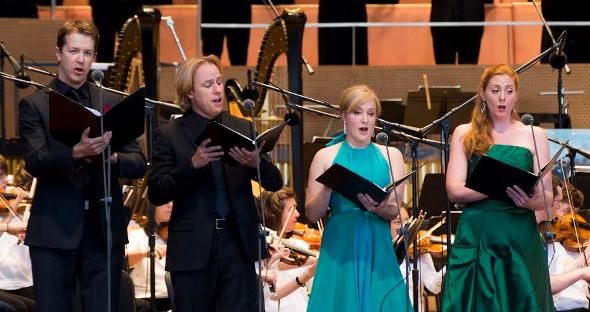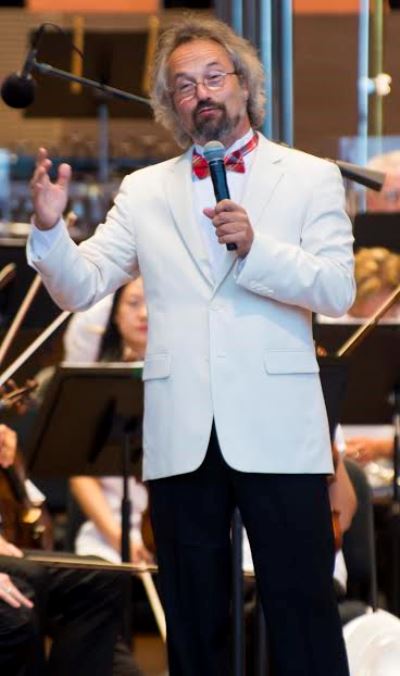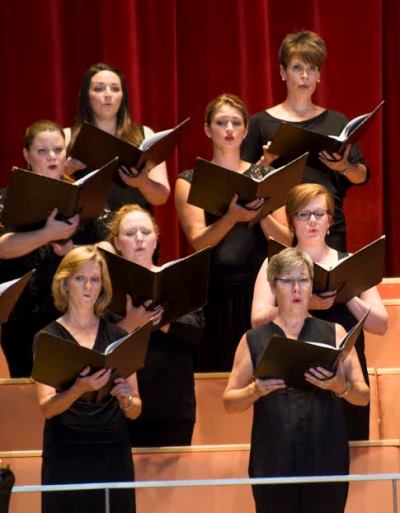Composer and architect connect as Kalmar illuminates Adams’ ‘Harmonielehre’ at Grant Park
 Review: Grant Park Orchestra and Chorus, conducted by Carlos Kalmar, performed Haydn’s “Harmony Mass” and John Adams’ “Harmonielehre” on Aug. 8.
Review: Grant Park Orchestra and Chorus, conducted by Carlos Kalmar, performed Haydn’s “Harmony Mass” and John Adams’ “Harmonielehre” on Aug. 8.
By Daniel Hautzinger
Millennium Park’s Jay Pritzker Pavilion, where the Grant Park Orchestra and Chorus performed Haydn’s Harmoniemesse and John Adams’s Harmonielehre on Aug. 8, is one of the most striking structures in a city full of awesome architecture. The Frank Gehry-designed outdoor stage calls to mind a bullet hole in sheet metal, dynamic silver panels exploding outward in spontaneous, sweeping waves.
 Harmonielehre is the aural equivalent of Pritzker Pavilion. It is brilliant and bold, monumental and impressive, bursting with energy. Like the strong curves of Pritzker set against the repeating but unique rectangles of the skyline, the piece consists of broad melodic lines over changing patterns, generally alike but unpredictable in their differences. The colored lights and metallic surface of the pavilion found an analogue in Adams’ arresting orchestral sonorities and silvery effects. Adams, meet Gehry.
Harmonielehre is the aural equivalent of Pritzker Pavilion. It is brilliant and bold, monumental and impressive, bursting with energy. Like the strong curves of Pritzker set against the repeating but unique rectangles of the skyline, the piece consists of broad melodic lines over changing patterns, generally alike but unpredictable in their differences. The colored lights and metallic surface of the pavilion found an analogue in Adams’ arresting orchestral sonorities and silvery effects. Adams, meet Gehry.
The orchestra and Carlos Kalmar, its principal conductor, gave a performance befitting this masterpiece and its magnificent setting. Though the tricky rhythms threatened to destabilize the orchestra at the outset, the uneasiness soon dissolved as all the parts fell into place like pistons firing in their cylinders.
Kalmar’s pacing generated huge payoffs, the oozing lassitude of Part I’s middle section flaring into a frenzied recapitulation of the opening. Part II: The Anfortas Wound built from stillness to wrenching anguish, punctuated by a screaming glissando in the strings, the brass section living up to Chicago’s muscular tradition. Finally, quicksilver flashes eventually coalesced into golden triumph in Part III: Meister Eckhardt and Quackie, inspiring extensive ovations.
The enthusiasm of the audience was matched earlier by the orchestra and the Grant Park Chorus in Haydn’s last large-scale work, nicknamed the “Harmony Mass” for its large—for the time—wind section. (Harmonie refers to a wind band in German). The piece brims over with Haydn’s characteristic joy, and avoids the righteous solemnity one might expect in a Mass.
 Jaunty fugues and lively dances invigorate the Latin text, which the Chorus, prepared by Michael Black, sang with gusto and a heavenly blend.
Jaunty fugues and lively dances invigorate the Latin text, which the Chorus, prepared by Michael Black, sang with gusto and a heavenly blend.
The orchestra was equally vivacious, following Kalmar’s supple, vibrant shaping and shading – quick flourishes by the bassoon were delightful, ever so slightly emphasized by Kalmar.
The interpolations of a quartet of soloists seems almost superfluous, as there are no extended arias and quartet passages are brief. Yet soprano Layla Claire shone brightly, with a lovely, honeyed voice that was showcased in the only extended solos.
Mezzo-soprano Julie Boulianne proved a rich complement to Claire in harmonized sections, while tenor John Tessier and bass-baritone Daniel Okulitch contributed strong buttressing to the women’s vocal flights.
Related Link:
- Musical Stars and Stripes will fly all summer as Grant Park celebrates American composers: Read the preview at ChicagoOntheAisle.com
Tags: bass-baritone Daniel Okulitch, Carlos Kalmar, Grant Park Chorus, Grant Park Orchestra, John Adams, mezzo-soprano Julie Boulianne, soprano Layla Claire, tenor John Tessier

